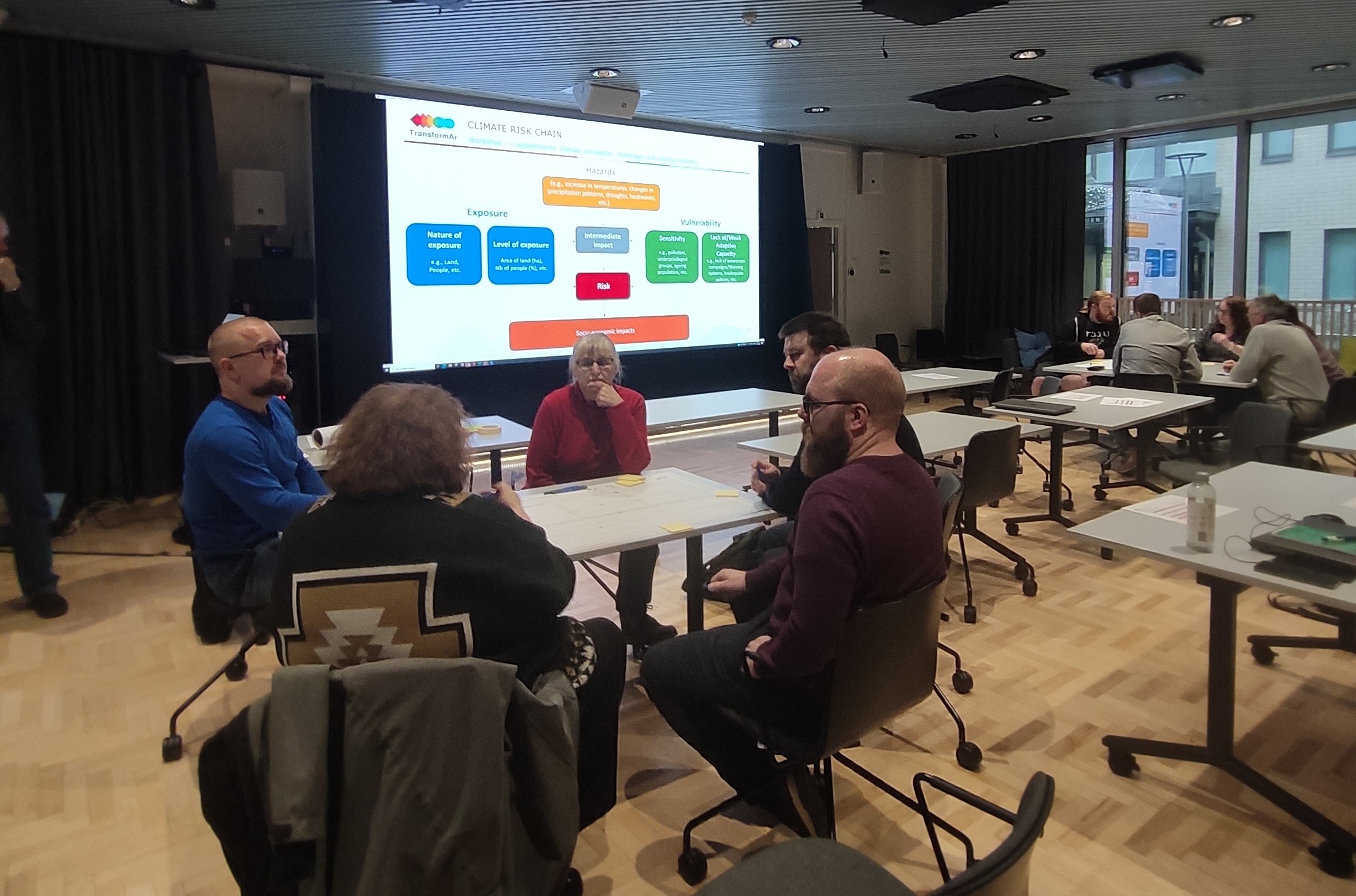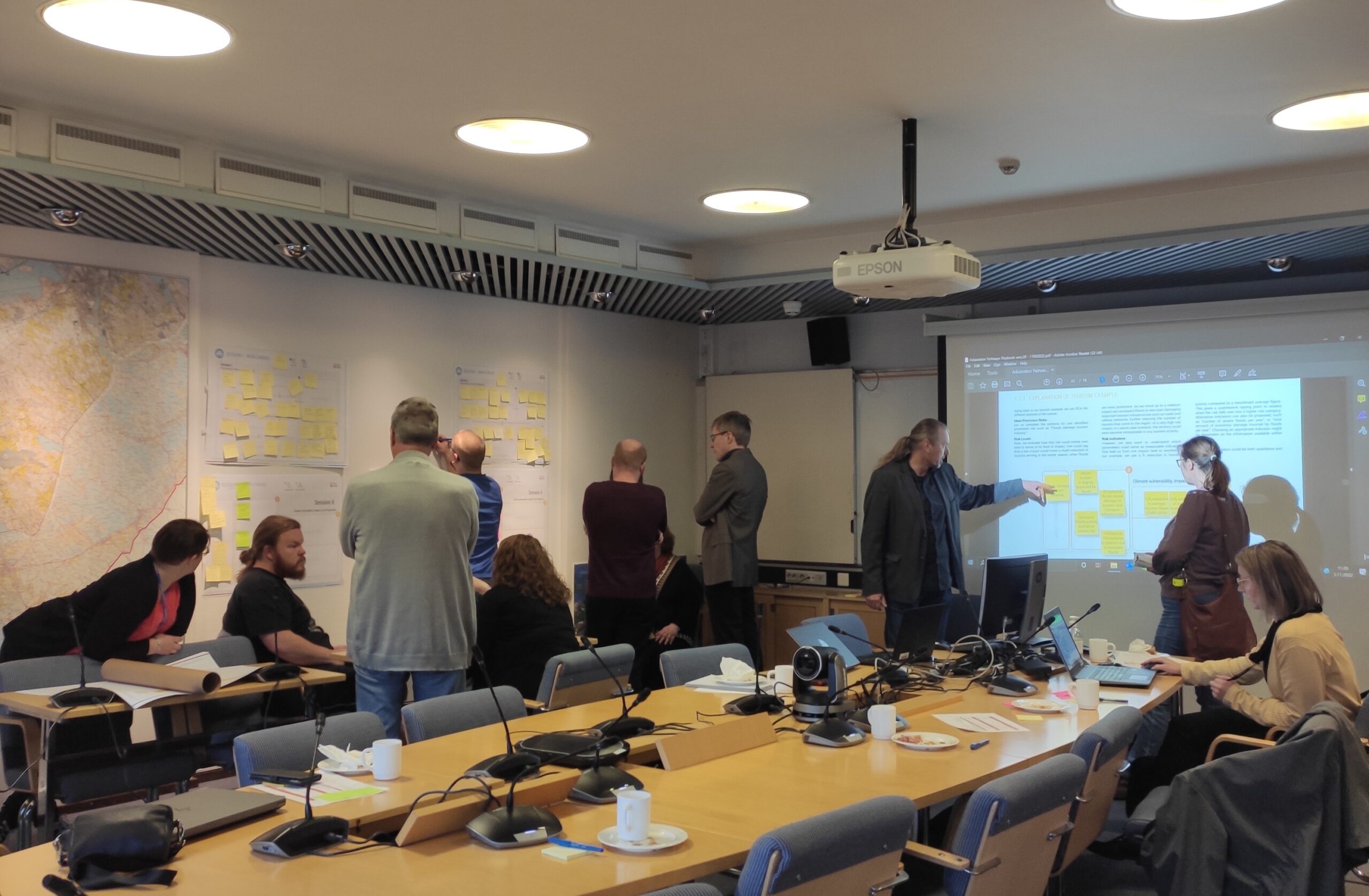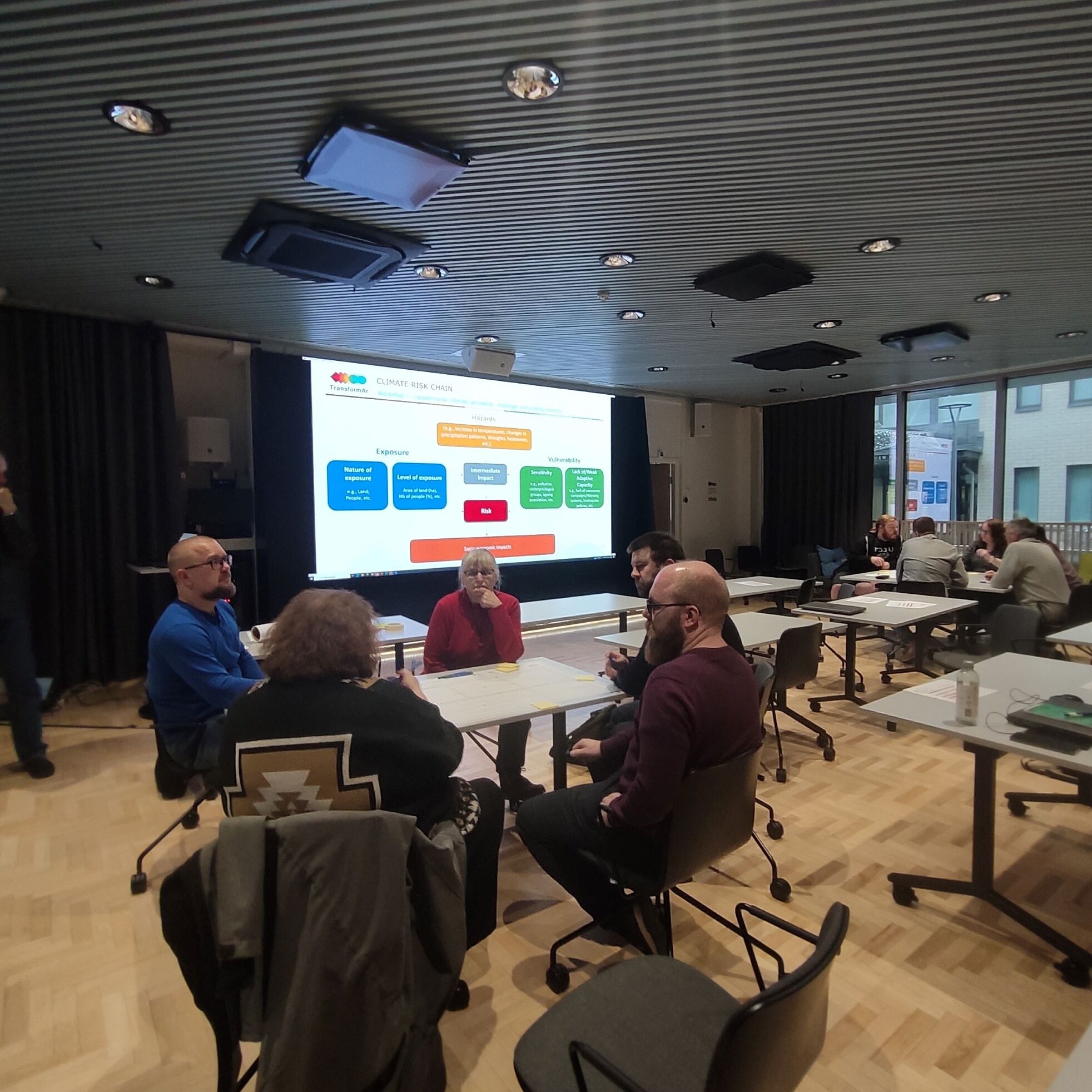The City of Lappeenranta organized the series of workshops for co-construction of adaptation pathways, following the methodology defined in the TransformAr Adaptive Transformation Playbook. For two days, participants met in Lappeenranta City Hall and online to follow the three-step methodology to better understand the context, impacts and risk faced by the city, and eventually propose solutions. The city of Lappeenranta was supported by LUT University to organize these sessions and were also followed by the Norwegian municipality of Gjovik which will replicate some solutions in its location, in a similar context. The main hazards impacting the city and its surroundings are:
- Heavy rainfalls,
- Storms notably during wintertime,
- Dry hot season entailing droughts,
- Hail
- Extreme weather phenomena in general
These entail great challenges for water management in the city exposed to floodings due to these conditions with potential damages on infrastructures and harmful consequences on population health due to water pollution. This highlights the need for the city to focus on water management in general and notably urban planning.
Participants shared their vision and will to have cleaner waters and a better water balance management to limit the risk of eutrophication and mix of stormwater with wastewater which could entail pollution. An adapted urban structure is also needed to deal with stormwater and other climate hazards and the increase of green environment in urban areas would help achieve their vision.
To tackle both water management and urban planning, several pathways were defined with the participants to achieve these visions. While some actions can be taken immediately and the outcome can be seen in short term, there are pathways which require more time to be effective. For both sectors, several pathways were defined depending on their focus and time scales.
For water management, Pathway A on the figure below is based on spreading knowledge about the city of Lappeenranta’s stormwater program and introducing storm water fee, not currently in use. Regarding this pathway, both existing and new solutions should be implemented wider. Also the need of support from decision makers with political alignments was highlighted. Pathway B is rather focusing on monitoring the quantity and quality of stormwaters, and based on the monitoring results, water should be treated decentralized to reduce the need to increase pipe sizes in storm water sewer system, and to ensure the water is treated and purified before being led to the drainage system.
Regarding urban planning, results are compiled in figure 4 below. Pathway A is thought to be a short-term pathway. It requires attitude change, which includes environmental education and information in general, plus political alignment (resources/funding, legislation). Technical solutions, e.g., new construction methods and nature-based solutions should also be implemented. In this context, environmental education should be invested in both in schools and in working life to distribute knowledge about climate change adaptation. Pathway B is a long-term pathway pursuing attitude change/information purpose as well and a major change in the design of procedures. Pathway C is also a long-term pathway, focusing on actions in land use planning, aiming to reserve areas for water treatment (both current and adding new areas), and implementing nature-based solutions, both existing, but not yet used in Lappeenranta, and innovative solutions.






